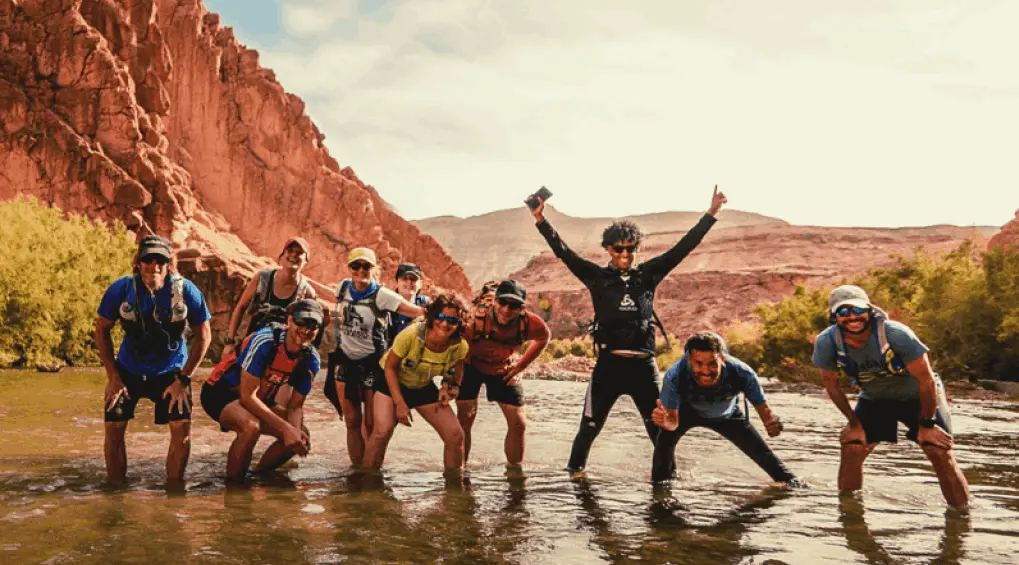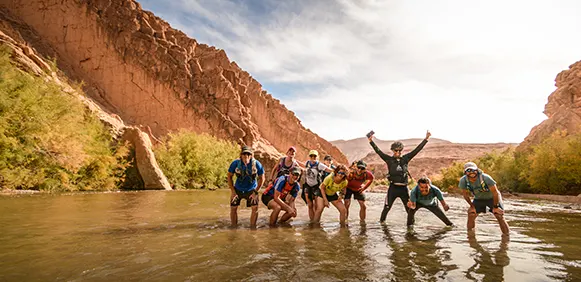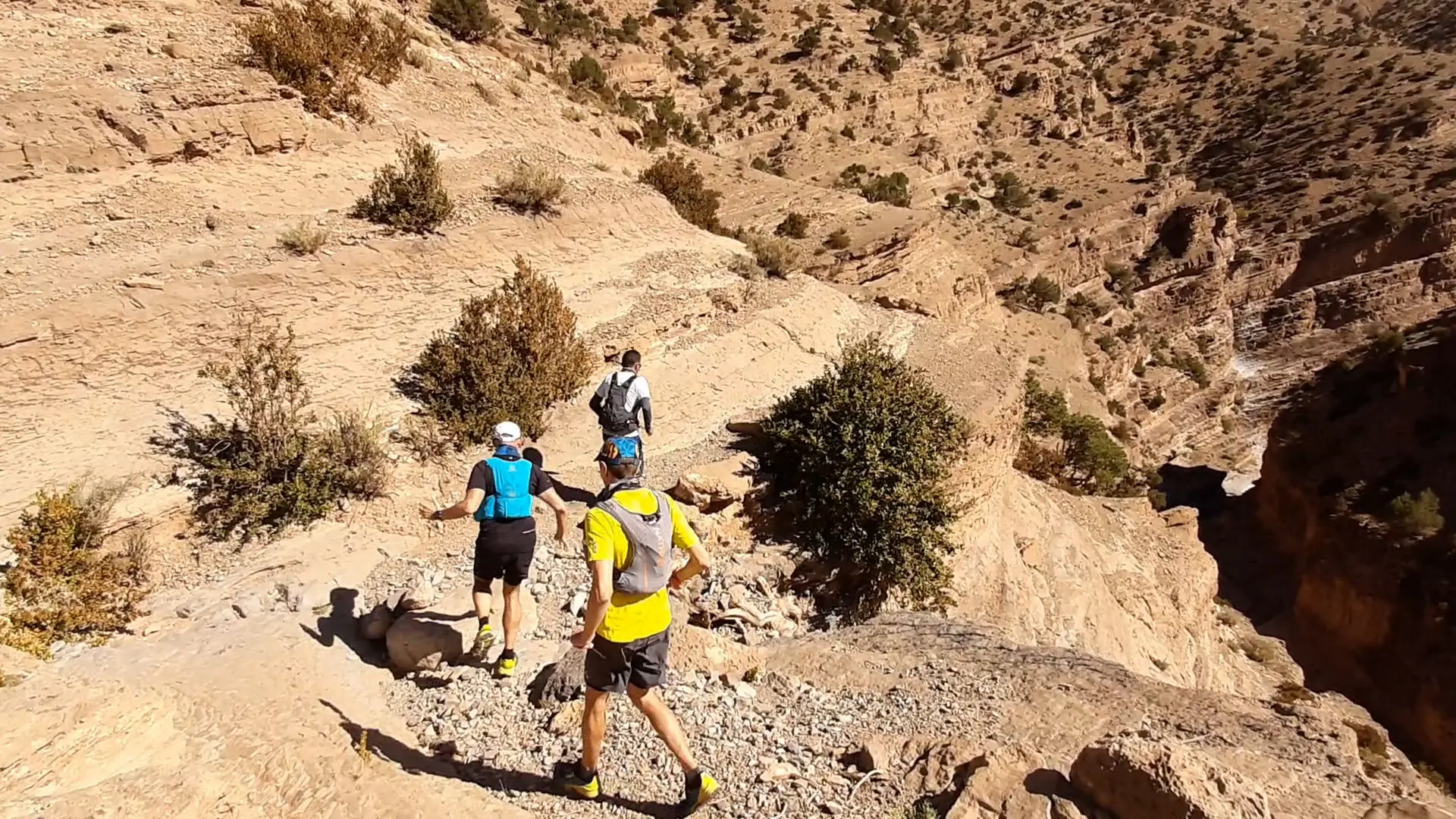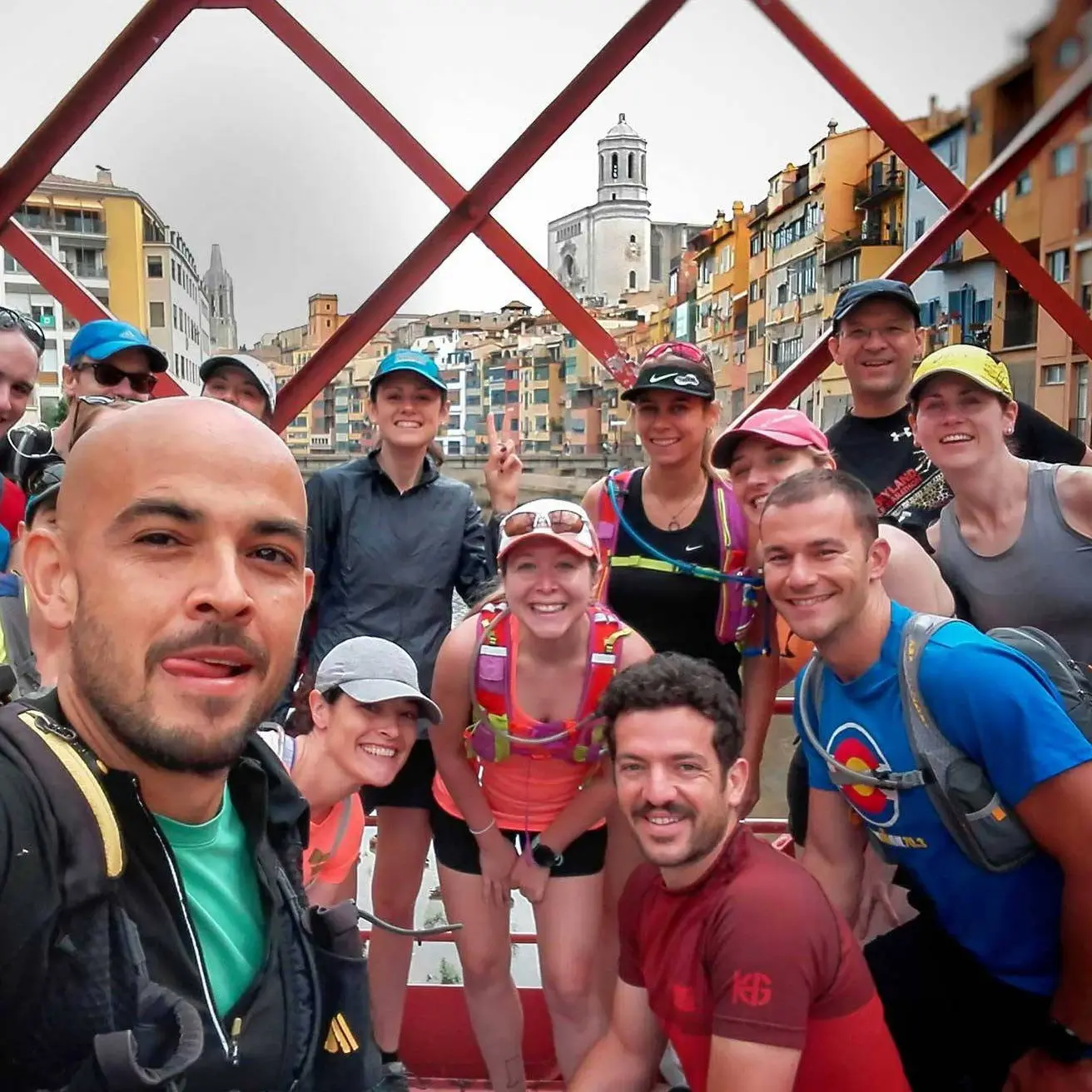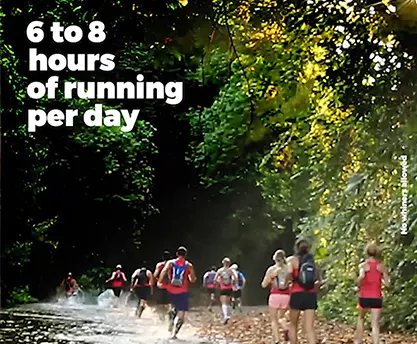Congratulations, you have decided to sign up for running! That's the hardest part and you've got it done. While it's tempting to jump right in, there are a few things to know first, and they're all here.
The running list for beginners.
Everything you need to get started running: advice on equipment, nutrition, clothing, and injury prevention.
1. FOCUS IN TIME NOT DISTANCE
Embark on a Journey: Explore the World through Our 2024 Running Events
Welcome to the world of Running Vacations, where the art of travel meets the passion for running. Since 2011, we, Pablo and Cristina, have dedicated ourselves to creating unique and unforgettable running adventures. Our belief is simple: running is the human way of traveling, and we invite you to join us on a transformative journey through four stunning destinations.
Destinations that Inspire:
Morocco, Costa Rica, Spain, and France - each location chosen for its rich cultural tapestry, breathtaking landscapes, and the promise of an unparalleled running experience. Our running adventures are not just about covering distances; they are a gateway to discovering an area in a way that only running allows. Lace up your shoes, and let the rhythm of your footsteps guide you through the hidden gems of each destination.
As Featured by TrailRunner Magazine:
We are proud to share that Running Vacations has been featured by TrailRunner Magazine, a testament to the authenticity and uniqueness of our running events. TrailRunner Magazine recognizes the passion and dedication we pour into crafting experiences that go beyond the ordinary, making us a standout choice for those seeking more from their running escapades.
Why Choose Running Vacations?
What sets us apart? It's not just about the miles; it's about the passion that fuels our trips. For us, running is not just an activity; it's a way of life. When you join our running vacations, you become a part of our world – a world filled with friends, family, and a shared love for exploration.
We don't offer tourism; we offer something more ancient and valuable. We use our legs to travel, connecting with the land and the people in a way that transcends the ordinary tourist experience. Our running vacations are an invitation to not just witness but actively participate in the beauty of each destination.
Running Vacations Created by Us: Pablo & Cristina
Our running events are not outsourced; they are born from the hearts and minds of Pablo and Cristina. As the creators of Running Vacations, we bring a personal touch to every detail, ensuring that each run is a carefully crafted experience. From the first step to the finish line, we are with you, sharing our passion for running and travel.
So, why should you join us in 2024? Because we offer more than just a run – we offer a journey, a connection, and an experience that will linger in your heart long after the miles are behind you. Lace up, breathe in the adventure, and join us on a running vacation that transcends the ordinary.
![Image cap [100%x180]](file:///C:/Users/josep/Downloads/mobirise/assets/images/abdupablo-333x333.jpg)
Run the World Adventures
Our running adventures company had been organizing multiday vacations for runners since 2011.
Running vacations calendar
2. LISTEN TO YOUR BODY
Pay attention to your body. When it comes to running, your body is your teacher. If something hurts, it means you've overexerted yourself and need to rest. Not all pain means you should stop running, but only you know how much it hurts and whether you can continue. You should also be aware of overtraining symptoms such as fatigue, lack of motivation, lack of sleep, loss of appetite, and so on. They are signals from your body telling you to rest. When you are ready to run again, your body will tell you.
3. STEP BY STEP, TAKE YOUR TIME
Slowly but steadily. It can be difficult to reign in your eagerness to begin running, but no matter your fitness level, it pays to start slowly. Running has a high impact and effort on the body, and if you are not prepared, you may injure yourself or lose motivation. Do not think of it as an all or nothing situation; instead, picture yourself three months from now in better shape, healthier, and happier. Take your time preparing, getting your equipment and training plan in order, and you'll be ready to go.
4. AVOID OVERTRAINING
You should also be aware of overtraining symptoms such as fatigue, lack of motivation, lack of sleep, loss of appetite, and so on. They are signals from your body telling you to rest. When you are ready to run again, your body will tell you. Make a strategy. Running, like any other pastime, necessitates preparation. We live such hectic lives that it's easy to overlook the importance of exercise. Determine how frequently you can run and when you will run realistically. Schedule it as a must-attend appointment on your calendar. Make it clear to your friends and family how essential it is to you, and that your running time is non-negotiable.
5. RUNNING PLAN
Make a plan. Setting a goal, no matter how small, will motivate you to run. Choose a large goal, such as losing 12 pounds or running 4 miles, and then divide it into smaller goals. For example, if you want to lose weight, you can tell yourself, "I'm going to eat right and run around the block twice this week," and then, "By the end of the month, I'm going to be able to fit into my favorite jeans again."
6. WRITE A JOURNAL
Write in a Journal .Keeping a journal of your progress is one of the best ways to stay motivated. You might be able to run for five minutes and then be out of breath on day one, but by day ten, you'll be able to run for ten minutes without pain. When you're struggling to stay motivated, go back and read what you did in the first few days to see how far you've come since you started running. It won't take long to get fitter, and you'll soon be able to run for 30 minutes at a time!
7. START WALKING
Walk and the run. Start with a walk-and-run program if you're brand new to running or exercise in general. It consists of alternating between periods of walking and running until a certain distance or time is reached. If you're already fit, you may only need to walk a short distance in the middle of your workout, but otherwise, start with a two-minute walk, one-minute run program and gradually work your way up to running intervals. This way, you'll gain depth while avoiding injury.
8. WARM UP
Warming and cooling off Whether you run 26 minutes or 26 kilometers, you must always allow time to warm up and cool down, or you will pay the price! Without getting too dramatic, failing to warm up can result in jerks, and failing to cool down will leave you sore the next day. Warm up properly before running by walking quickly or jogging slowly; always cool down with a series of stretches.
9. CLOTHING
Wear appropriate footwear. It doesn't take much to get started running, but you will need a good pair of shoes. Many people run in shoes that do not provide adequate support and are begging for an injury. Running shoes are designed to cushion the foot, absorb shock, and lower the risk of injury. Because we all have different feet, shoes that work well for one person may not work well for another. Ask a good sports store to analyze your stride to determine how much extra padding and support you require.
10. DON'T DRIVE, RUN THERE
Use running as transportation. Finding the time to run is one of the most difficult aspects of running. We recommend that you see if you can run during any of your daily commutes, as this will save you time. Can you sprint home from work with a small bag for your belongings? Can you run home from class or do you need to invest in a jogging stroller for your baby? Is it necessary for you to take the dog for a walk? Run with it. You will be able to run with consistency if you take advantage of the displacements that you must do anyway.
11. WORK YOUR CORE
Don't overlook your foundation. A strong core will help you run faster. It's not just about getting the "chocolate bar," your center is where your strength comes from and determines your running quality. Running well reduces your risk of injury. Sit-ups are the most common core exercise, but you can also do yoga or Pilates to gently strengthen it while stretching your muscles.
12. THE GYM
Strengthening Exercises As part of your running routine, go to the gym to build strength. Running puts a lot of strain and stress on the legs, so the stronger they are, the better. Lunges and squats are excellent exercises that can be progressed by adding weight. Some yoga standing poses, such as warrior, are also very beneficial. You can do circuit training in the gym or add more cardio.
13. THE GEAR
The Right Equipment You don't need cutting-edge technology to get started, but there are a few items you should purchase. Women should begin with a good sports bra to avoid future pain and sagging. Because the chest moves a lot while running, get one with maximum support. Avoid cotton t-shirts because it absorbs sweat and makes you cold, and the material becomes heavy. Even a cheap running shirt will be absorbent, keep you warm in the winter and cool in the summer, and keep you dry.
14. TECHNOLOGY
Running technology is very advanced, and your smartphone can assist you. Examine the available running apps and choose one that includes training programs or calculates distances, times, and calories burned, so you don't have to keep a diary and can also share your progress.
15. HIDRATION
Keep hydrated. When exercising, you should always have a bottle of water with you. However, don't overdo it; instead, take small sips throughout the day to stay hydrated. Make sure you drink plenty of water in the two hours leading up to your run. If you're only going for a short run, you probably don't need to bring water, but if you do, drink only small sips throughout the session. When you get home, make sure you rehydrate.
16. SOCIAL
Don't Go It Alone Running is a solitary sport by nature, so staying motivated to get out there can be difficult. Time will fly by if you arrange for a friend or family member to run alongside you. Your children can ride their bikes alongside you while you run, or you can bring your dog. If you need company, look for a new runner's club where you can get support and meet other runners. There are also online forums that connect runners of similar skill levels, which are worth exploring.
17. SAFETY
Safety It is only important that you consider your safety when going for a run. If you're going to listen to music, turn it up loud enough to hear what's going on around you, and be cautious when crossing the street. We recommend that you do not wear helmets if you run at night because it is critical that you remain alert. Also, if there is no sidewalk, make sure you are visible by wearing reflective clothing or bands and running against traffic. Finally, it is critical that someone knows where you intend to run and that you avoid isolated areas.
18. NUTRITION
Eat Healthily Proper nutrition is important for everyone, but especially for runners. A healthy diet is the fuel for your sport, and it should contain a good balance of proteins, carbohydrates, fruits, and vegetables. Reduce your intake of sugar and fatty foods, and eat three meals (plus two snacks) per day to keep your metabolism active. Do not try to follow a strict diet while running because it is critical that you get all of the vitamins and minerals your body requires. A well-balanced diet will yield positive results and allow you to continue running.
